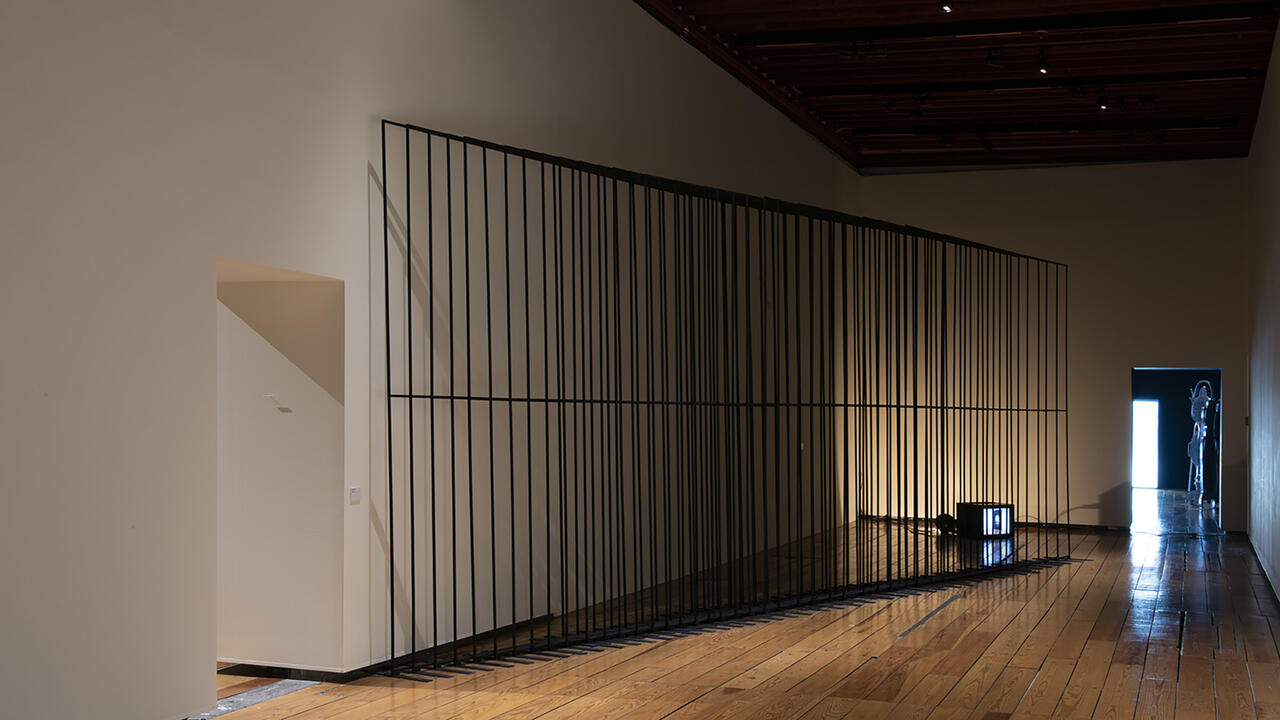Instantaneous
'Instantaneous' describes itself as 'focusing upon the presence of short-lived and individual occurrences', and claims that '...every instant of the exhibition will be different, as the artists' activities ignite each other to exist as a composite within a moment of time'. This wishful over-excitement turns out not to be the case, and is probably an embarrassment to the better artists in the show, who fortunately remain unignited. In practice, much of the work is resolutely static, and is about differing kinds of endurance. Curiously, the exhibition's catalogue essay blanks both the art and the artists, failing to mention them at any point.
The gallery space is kept in semi-darkness, to facilitate those pieces involving projection. Works not requiring darkness therefore appear rarer and more enigmatic than usual. Whether intentional or not, this is successfully atmospheric, like the 'Moonlight World' building for nocturnal animals in London Zoo.
Entering the dark gallery the visitor is greeted by Claire Shillito, who occupies a space resembling a nightclub reception area with a bar desk. Here she takes the name and address of the visitor and, very undemocratically - depending on whether she likes the look of you or not - hands over a card (like those advertising prostitutes) on which is written an invitation to call her at a certain number. This is Shillito's contract with her audience to perform personally Discreet Escort (1998), outside the gallery. Her escort agency gives her clients 'an opportunity to meet an artist on a one to one basis; creating an intimate relationship, which could lead to friendship', conditional on an escort fee of £15 an hour.
Breathe In/To Yourself (1998) by Stephen Nicholas and poet Matthew Caley comprises images of a face, projected onto balloons, accompanied by voices reading a fractured, self consciously 'poetic' text. A strained theatrical quality in the piece confirms the prejudices of those whose idea of contemporary art is based on that of art directors of naff Hollywood films of the 60s and 70s.
In her performance In Between (1998), Tal Shoshan covered her naked body with shaving foam and moved blindly around the aforementioned balloons, in concert with their baleful sounds. She occasionally scraped the foam from herself, remaining stationary for long periods. Intended to deal with issues of gender, identity and rites of passage, the work in fact engenders a respectful compassion for her sad endurance in the darkness.
Upstairs, Sol Sneltvedt's floor projection, Transit (1998), depicts the reflections of moving clouds in a glass of water. The described principles of this piece are interesting to read, and the catalogue photograph is beautiful, but the artwork itself is unfortunately dully uniform, perhaps because of the imperfect presentation technique.
Commanding the huge back wall of the space is Mark Dean's Picture in Picture (1998). This is elegantly simple, clear and precise, showing the movie The Picture of Dorian Gray in its entirety. Within the centre of the screen an oval insert shows the same film playing backwards, although this cameo is without sound. Picture in Picture is therefore a visual palindrome, symmetrically reflecting the film's theme of deferred ageing. In Dean's construction though, this deferment becomes a double negative of durations. As there is a moment at which the two versions meet, Picture in Picture is absolutely consistent with the stated theme of 'Instantaneous'. Its only possible fault may be an over-dependency on the original film.
Dean showed other successful variations on the concurrent movie idea, and the random synchronicities and ironic contrasts that these create. In Scorpio Rising 2 (1997), the screen is divided horizontally; the upper showing the trash movie Hells Angels on Wheels (1967), the lower Pasolini's The Gospel According to St. Matthew (1964). Both run normally, to wry effect.
Following up Shillito's invitation after the show, my telephone enquiry escalated into a pleasantly ludicrous correspondence. Like a gamester, Shillito works in a high risk area, as proved by the number of times she took leave of her frieze reviewer client during the course of an evening at the cinema, to telephone her minders and reassure them of her personal safety (some reviewers being harsher than others perhaps). Seeking to explore an individuated acknowledgement of her audience, dealing with sexuality, authority, privacy and trust, Discreet Escort is extremely discreet, and discreetly extreme. As her analogy between art and prostitution leaves the art reviewer occupying the role of scuzzball pornster, it seems fair to pronounce Shillito a great chick who gives good art.














